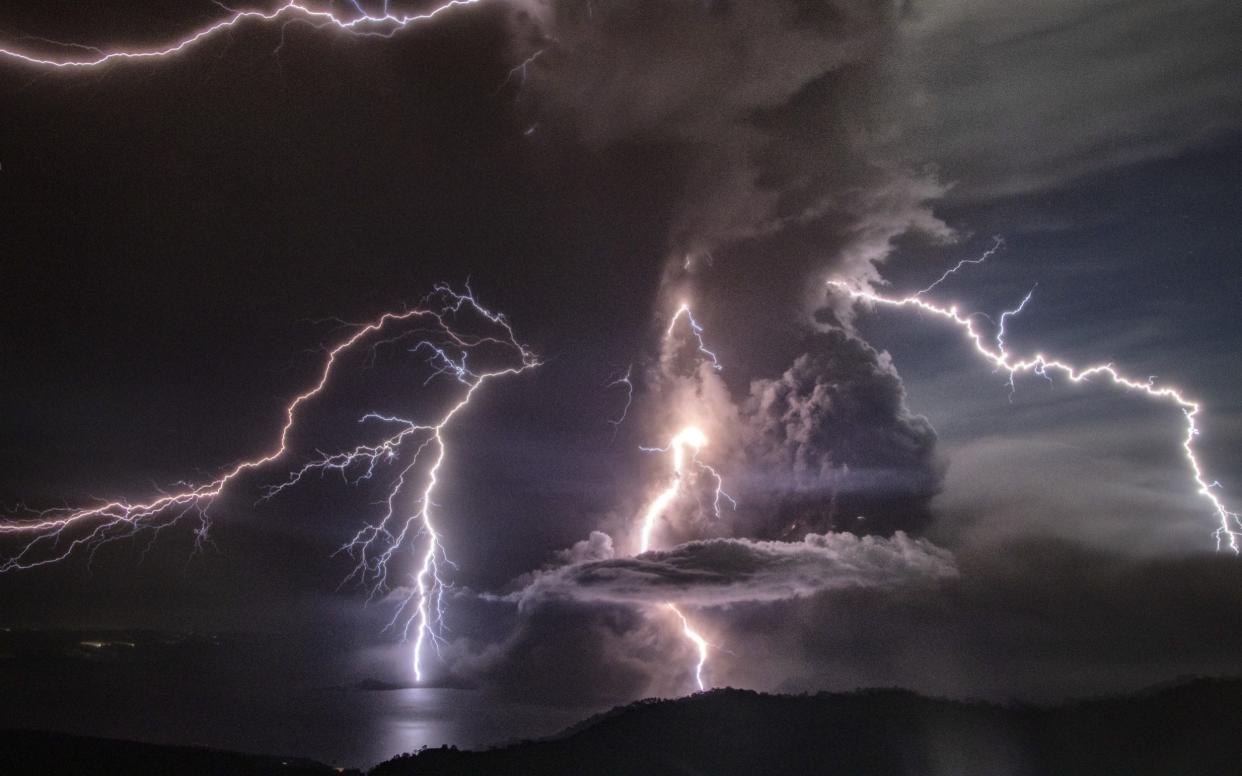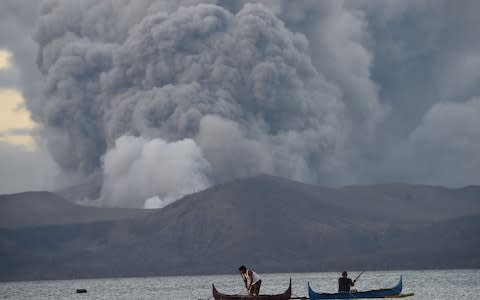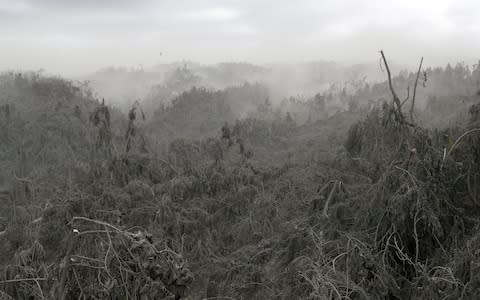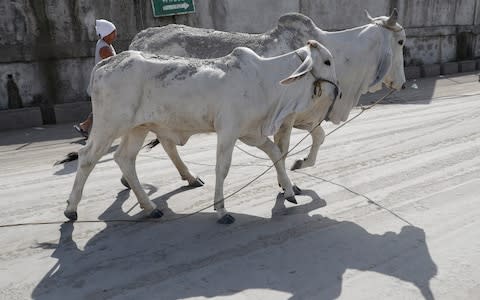Hundreds of thousands could be stranded by world's 'most dangerous' volcano for months

Hundreds of thousands of people in the Philippines have been left in fear for their homes and livelihood after being warned to immediately flee one of the world’s most dangerous volcanoes, which threatens either an imminent “explosive eruption” or constant activity for months.
The Philippine Institute of Volcanology and Seismology (Phivolcs) is maintaining the alert level for the Taal volcano at 4, meaning a hazardous eruption is possible within hours to days, and has urged the evacuation of everyone within an 8.6-mile radius.
According to the United Nations Office for the Coordination of Humanitarian Affairs (OCHA), around 459,000 live within the most dangerous zone. The Philippine Red Cross said on Tuesday that close to 25,000 had been able to evacuate, but urged others to leave urgently.
“I’m not trying to scare everybody, but we are preparing for the worst. The possibility of an explosive eruption is high. The challenge right now is taking care of many evacuees. Even more people need to be evacuated,” said chairman, Richard Gordon. “Bring your animals and livestock to evacuation centres if you must.”

Phivolcs has recorded more than 300 earthquakes since Taal, a small but deadly volcano that sits in a picturesque lake some 45 miles south of central Manila, the capital, violently spewed a plume of steaming ash from its crater into the stratosphere on Sunday.
It has experienced at least 34 eruptions in the past 450 years, including a 200-day eruption in 1754, and a violent explosion in 1911 that claimed more than 1,300 lives. The volcano’s last period of activity was from 1965 to 1977.
Mariton Bornas, chief of the Phivolcs’ Volcano Monitoring and Eruption Prediction Division, told The Telegraph that while there had been an apparent decrease in the activity of the main crater, the “volcanic earthquake activity” had not abated within the last 24 hours.
New fissures had also appeared on Tuesday in the southwest and also northwest, where they had been spotted during the 1911 eruption, she added.
It was difficult to predict how long people would have to remain away from their homes, she said. “If we look at the past behaviour of the volcano, it’s very varied. It could be as quick as the 1911 eruption which lasted from 27 to 30 January, or as long as 1754, which was seven months.”

Authorities in the surrounding province, Batangas, which has been covered in deep layers of suffocating ash, have declared a "state of calamity,” while schools and businesses in Manila remained closed on Tuesday due to bad air quality and hundreds of flight cancellations have caused travel chaos.
The government has urged desperate residents concerned about looting and their livestock not to risk returning to their homes in the immediate vicinity of the volcano.
Left in limbo, their panic has not been eased by viral pictures and videos of suffering, muddied animals on social media. In one heartbreaking clip, a man tries to calm distressed horses caked in thick, grey ash.
Professor Richard Arculus, an Australian volcanologist, formerly a professor of the School of Earth Sciences at the Australian National University, told The Telegraph that the authorities would likely stick to the “precautionary principle” as the worst-case scenario could be so catastrophic.

Taal is known as a “complex volcano” because it has several eruption points that have changed over time.
“It’s one of the smallest volcanos in the world but a volcano doesn’t have to be high to be lethal. Many of the more intensely dangerous volcanic centres are negative volcanos - are holes in the ground or big lakes,” said Professor Arculus.
Predicting eruptions had become easier, but past behaviour could not be trusted as a reliable indicator of what was to come, he cautioned.
While Taal could still “fizzle out” or “rumble for weeks to months,” one of the biggest fears was an eruption accompanied by a “base surge,” he said.
The phenomenon – horizontally-travelling hurricane force winds laden with water, dust and ash – was first observed by scientists tracking underwater nuclear tests in Bikini Atoll in the Pacific in the 1940s.
When the explosion broke the surface of the sea, the energy expanded not only upwards but in a horizontally and circumferentially expanding blast hugging the water surface, he explained.

Tourists who were killed or injured in the recent volcanic eruption on New Zealand’s White Island, had been caught up in a base surge. Moreover, Taal was the first volcano where this kind of blast was recorded, he said, adding that it could travel for several miles and also cause a tsunami.
A second major hazard would be the potential collapse of the volcano’s column if the energy being dissipated into the stratosphere suddenly eased off.
“The collapse of the column can be coming at high speed and there is no way for you to escape, so that can blanket the surrounding countryside with what is known as a pyroclastic flow,” said Professor Arculus, referring to a fast-moving current of hot gas and volcanic matter that can reach 700 km/h.
Finally, the location of Taal in a lake raised the risk of “the direct interaction between magna, the vapour coming off the magma and groundwater,” creating “an explosive situation,” he said. “All of this is bad news.”
Scientists calculating Taal’s activity with seismographs, gas measurements, and inflation and deflation sensors to track the magma body, face an unenviable task.
While the 8.6 miles- radius around the volcano is considered the most dangerous, the dangerzone extends to a wider 10.5 miles, including some 930,000 residents.
“I really sympathise with the people trying to predict getting a million people out of the way in the event that it’s better for them to be out of the way than living around the shores of the lake. How long they are gone for, we don’t know.”

